10 tips for designing a British country house bathroom
The British country house bathroom is elegant, smart and incredibly comfortable – here's how to get the look

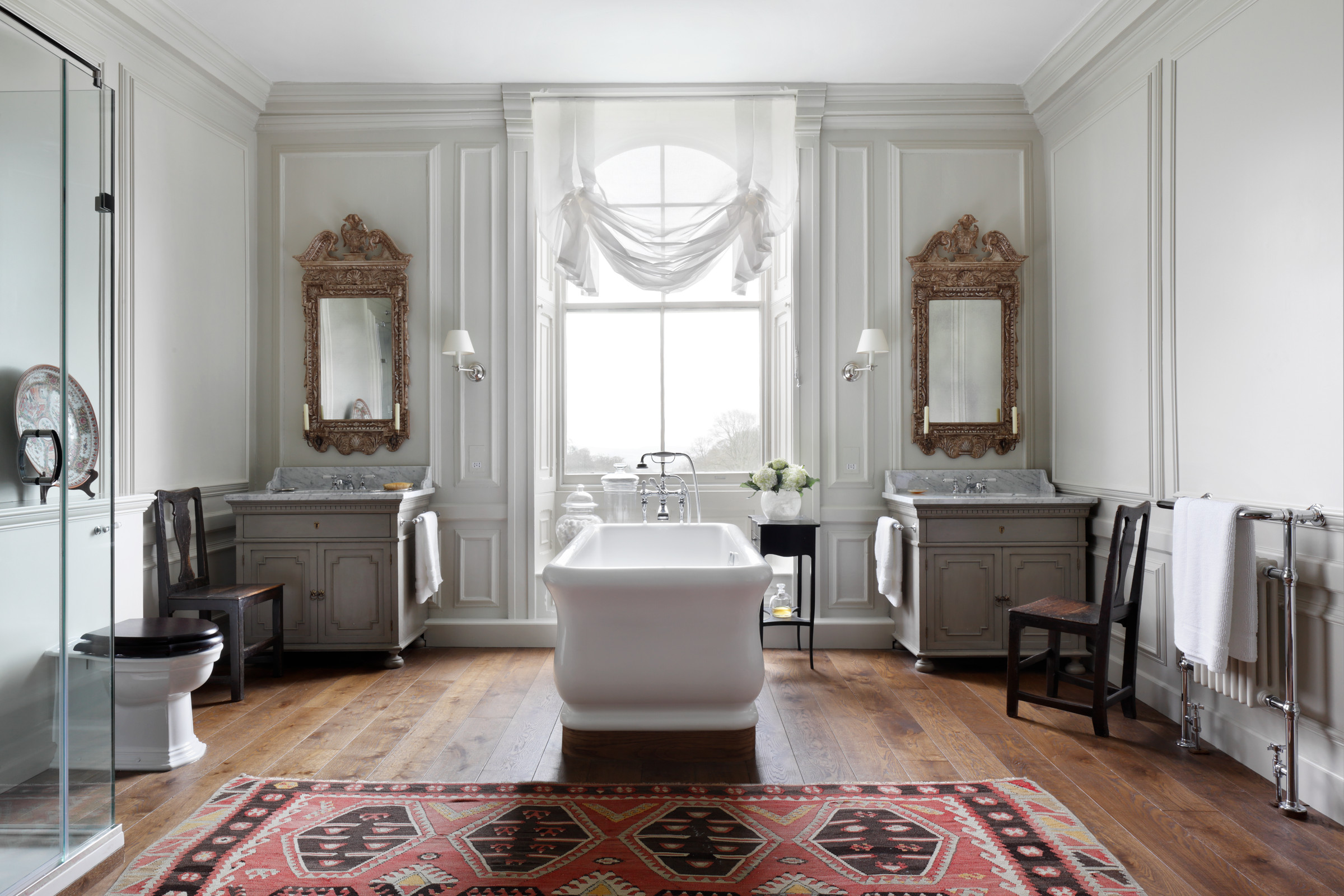
Some may regard them as purely functional spaces but I have a different approach to bathrooms, and love to create a warm and relaxing sanctuary with classic British country house style.
Let’s face it, there are increasingly fewer times in our days (or week) when we can escape the noise and hubbub of our daily lives – that’s why I take great pains to ensure the bathrooms in my clients’ houses are special retreats.
We actually spend a lot of time in bathrooms and there’s nothing more relaxing than being able to close the door for 10 minutes of peace. As a result, bathrooms should act as an oasis or a sanctuary rather than feel cold, stark and utilitarian. Over the years, I’ve fine-tuned how to get it right.

Henriette von Stockhausen works on projects on in both Europe and the US, blending antique and contemporary pieces to inject timeless appeal into upscale houses, creating the perfect backdrop for modern life.
1. Decorate bathrooms like any other room
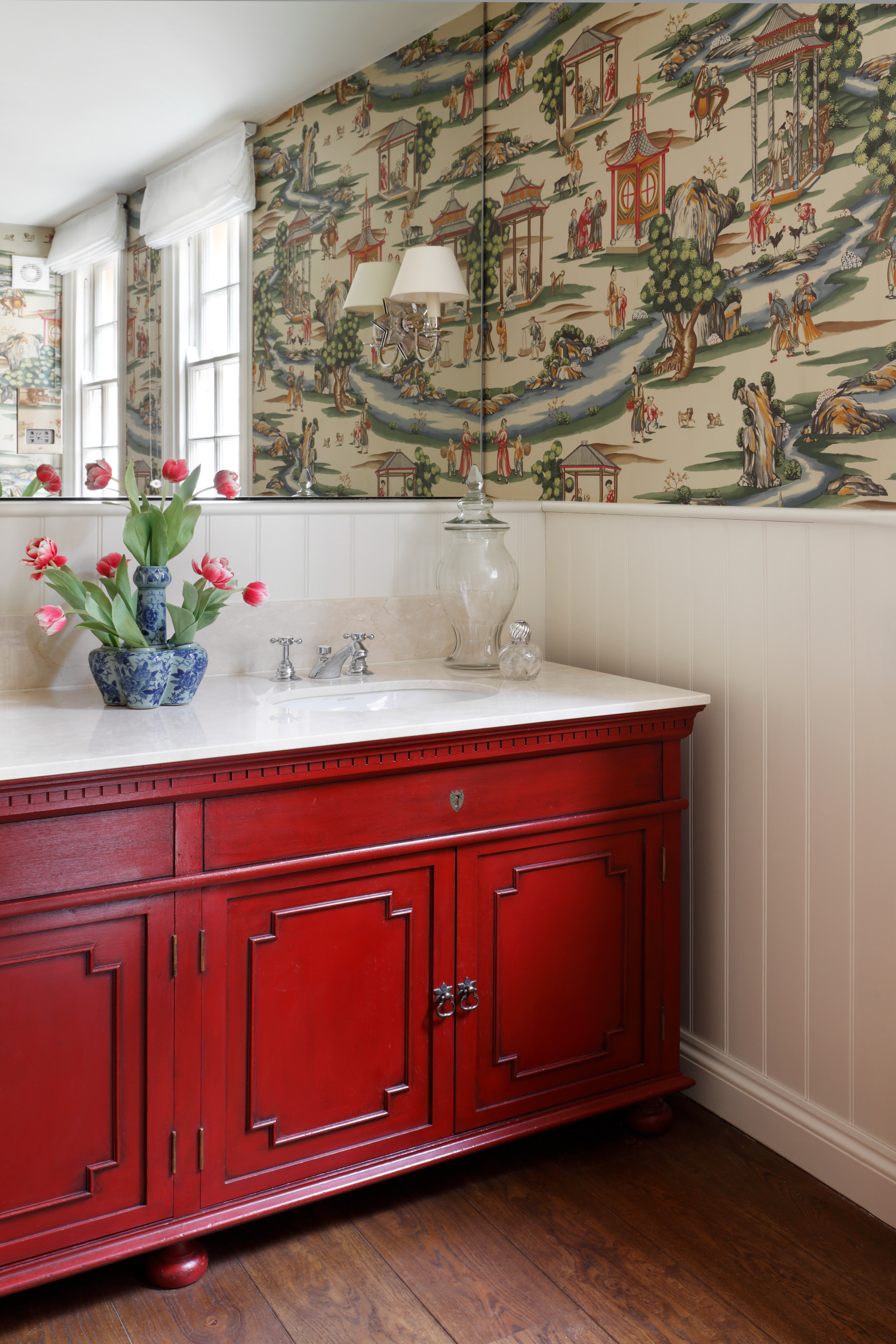
Aesthetics are just as important as practical elements when it comes to creating a warm and cozy country bathroom. My first step is always to turn my back on any idea that it’s acceptable to have a room of hard finishes and cold echoes.
What I try to do in my clients’ bathrooms is treat them like any other room – paying attention to details such as lovely curtains, special lighting, antique rugs and, where possible, working fireplaces, alongside the important practical elements.
2. Add color and pattern on the walls
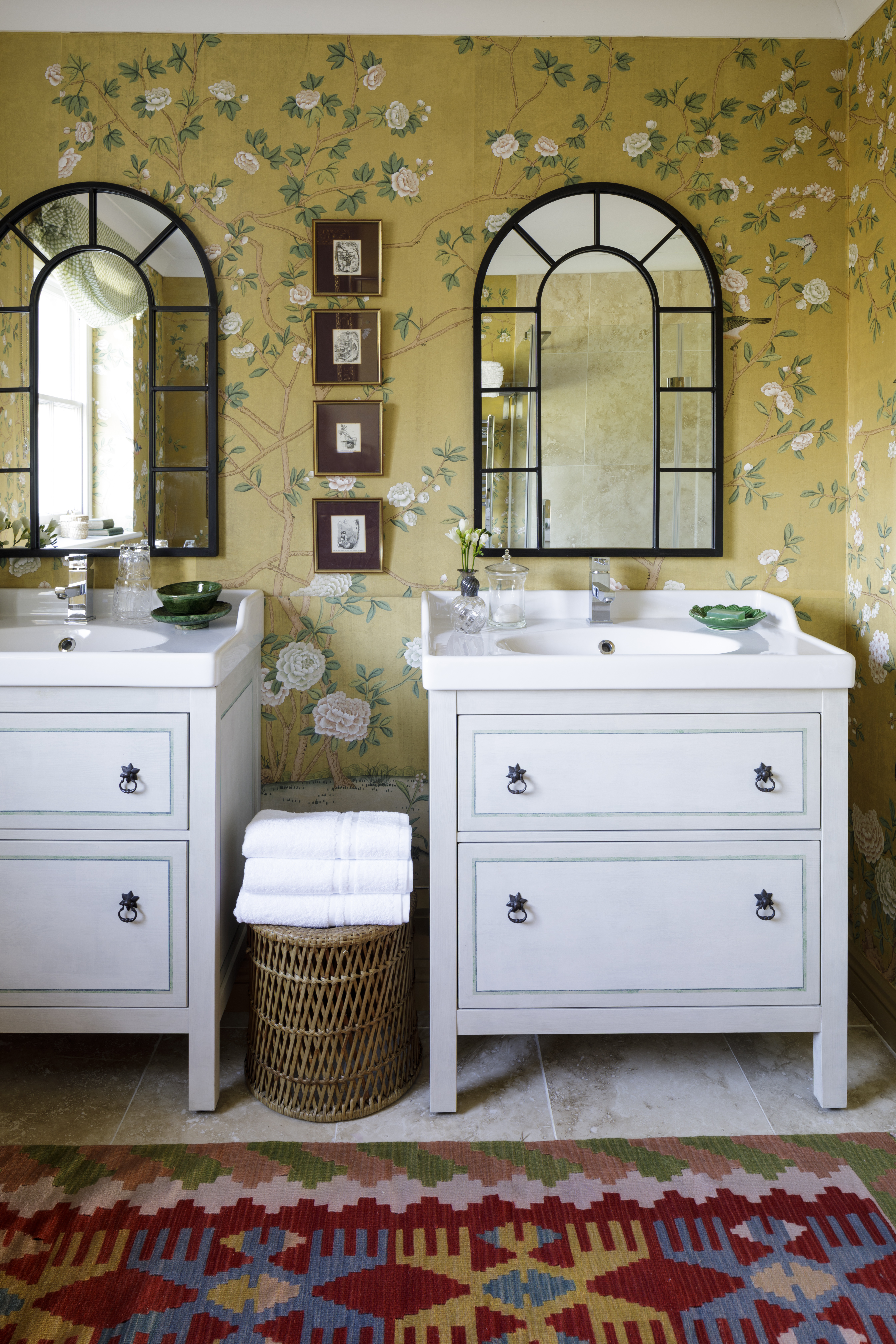
Lots of houses that I visit have bathrooms with walls tiled up to the ceiling; it’s not necessary. In order to create warmth, be more strategic with the use of marble, porcelain or tiles – it will leave space to do something prettier with the walls and floors. Yes, a shower will need something to keep the walls dry but only to the top of the glass enclosure.
While it might not be an obvious choice, many wallpapers today are printed on paper that is suitable bathrooms and are often my first choice for country house projects; it’s another way to underline my approach that bathrooms are as important as any other rooms.
Design expertise in your inbox – from inspiring decorating ideas and beautiful celebrity homes to practical gardening advice and shopping round-ups.
If the wallpaper isn’t suitable for bathrooms, you can add a varnish to make it waterproof – this is something we’ve done with a de Gournay paper recently.
For an all-over finish, wallpaper all the walls and then cover the shower area with sheets of glass (but be aware that this only really works if the walls are fairly flat).
In attic bathrooms, I like to take the bathroom wallpaper up to the eaves – a non-directional small scale print by Robert Kime works best. This is an ideal for guest bathrooms that aren’t going to be in use every day or those without showers which are less likely to steam up.
If going for paint, you can soften the effect by going for a specialist finish such as a drag, marble or shellac – it adds movement and depth and looks more considered than flat paint walls. Finally, another trick I’ve used in my own home to add warmth is to panel the bath and the walls up to dado height with tongue-and-groove, it looks great and can take getting a bit wet.
3. Lay rugs on the floor

A lot of people are tempted to choose bathroom floor tiles, but my instinct is to avoid them – except for wet rooms or family bathrooms used by young children or teenagers which might get drenched.
In old houses which have their original floorboards, my preference is to keep these in place and lay antique bathroom rugs on top.
Of course, some environments call out for something else. I’m not a big fan of cut-pile carpets in bathrooms, although I admit that they instantly make them feel warmer. An alternative is an artificial sisal from The Unnatural Floor Company. It looks exactly like sisal but is made from recycled bottles and is more suitable for bathrooms.
4. Layer lighting

Bathroom lighting is very important to me and getting this element right is another clever way to avoid having a stark and cold bathroom. Being able to turn the lights low for a luxurious soak at the end of the day is vital. To achieve this, think about layers.
Although I try to avoid them where possible, it’s fundamental to have adequate light in a bathroom and for that a few directional downlighters are needed. Have wall and picture lights on a separate circuit so that other sources can be switched off while having a bath.
To add further softness, I like to use silk shades rather than hard glass globes on wall lights – it’s another opportunity to introduce a fabric and a pop of color; Susan Deliss has some gorgeous ones. I’ve also hung pretty alabaster ceiling pendants or antique chandeliers which cast a lovely softened light in the room.
5. Highlight architectural details

Where the space and window location permits, I love putting window seats with upholstered cushions in bathrooms – and often install squat radiators underneath which allows the heat to rise up. This is especially lovely when there’s a pretty view to enjoy.
A fireplace is a real treat to have in a bathroom, even if that’s not possible, I’ll always strive to keep any existing fireplaces in bathrooms to make features of them.
Also, consider fitting cornices if none exist already: this is particularly important if you are wallpapering the bathroom as it gives definition, structure and a finishing point for the paper.
6. Dress the windows
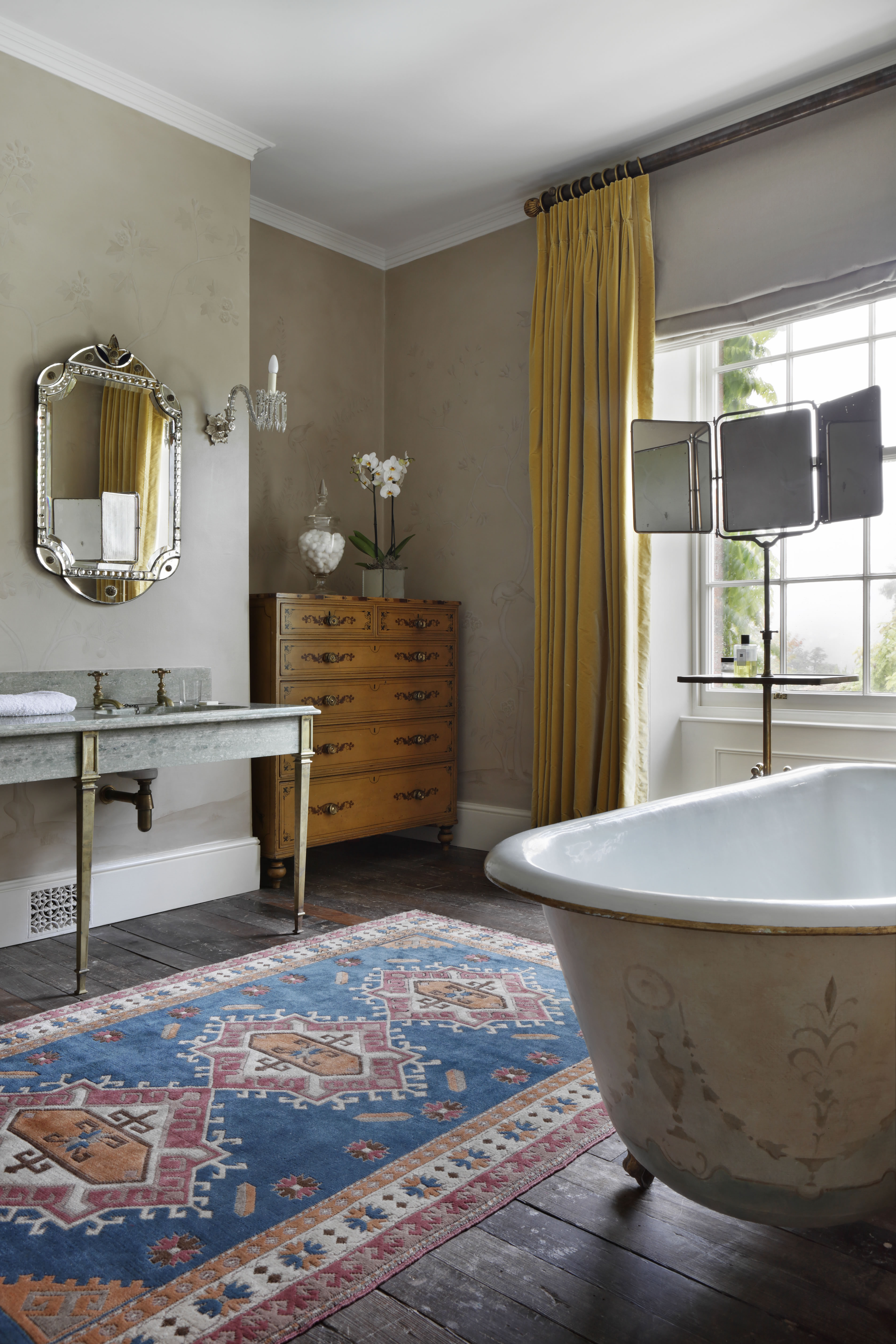
Fabric acts as the perfect foil to the solid surfaces that inevitably have to be in bathrooms, so my recommendation is always to dress the window (or windows).
Curtains, in particular, will add instant warmth and are fine as long as they are a sufficient distance from splashes. Ideally, you want to allow a bathroom to be light by day and cozy by night.
Where budget (and space) permit, a sheer blind and a curtain gives ultimate flexibility but if there is a concern about water damage, opt for a blind or a sheer on its own.
Make the bathroom window treatments more elaborate by choosing an unusual shape such as a balloon or relaxed Roman. It adds a bit of volume to the fabric and will help relax the space.
7. Mix old and new
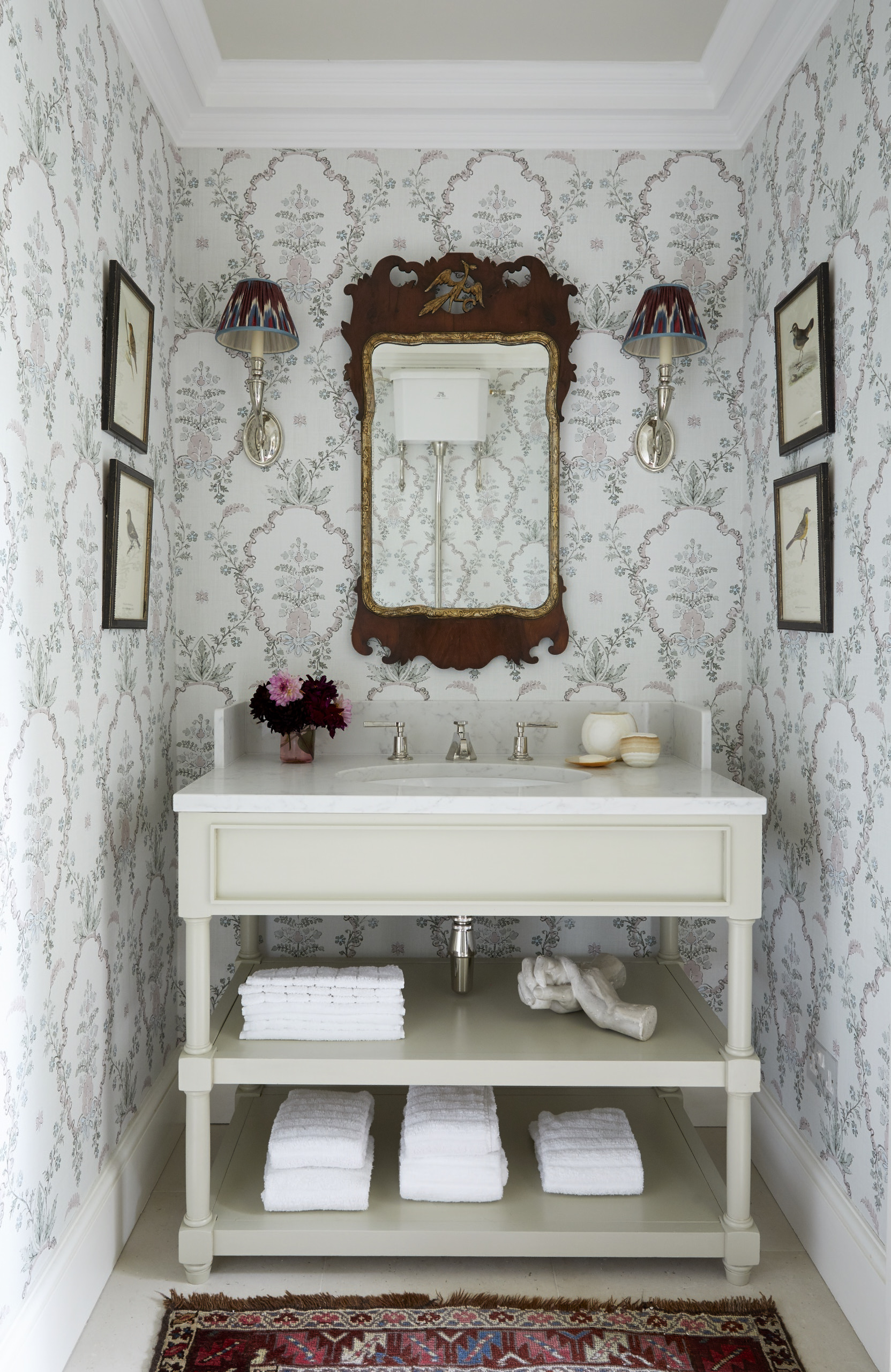
Practical bathroom storage ideas are always important. Most of our bathroom vanity ideas are custom made from antique pieces that are remodelled to accommodate an undermount basin. We prefer this approach as it allows us to adapt them to the right size and use a marble that we like – ready made ones tend to come in either Carrara or black marble, which is decoratively limiting.
When using a free-standing vanity, I’ll often source a chest of drawers; Edward Hurst is a favorite dealer. I also love to install antique or mid-century mirrors, rather than new ones. They magnify the light and add a magical mood; Fiona McDonald is a good source. Then I will supplement these with magnifying mirrors.
In larger bathrooms with lots of space, I’ll often find an old glazed cupboard and paint it in a cool color with a mirrored back panel – it’s the perfect spot to arrange a collection of old scent bottles. I also like to add a comfy chair as a place to put clothes.
8. Include art

As a general rule of thumb, any room looks better with art – and bathroom art ideas are another way to underline the message that a bathroom is a room in its own right. I love hanging paintings with picture lights, which are fine as long as it’s the correct distance from the water source. Or I’ll find a collection of prints and do more of a close hang.
9. Showers, baths and basins

Even if the rest of the bathroom is very clean and contemporary, I do like to introduce a showstopper antique into the mix – again, it will add some character and interest to the space. Waterworks and Drummonds do beautiful replicas of antique bathware which are customizable, I often turn to Barbara Sallick – who owns Waterworks – and her book The Perfect Bath for inspiration.
Another way to soften the space further is to use more unusual shapes with marble backsplashes above the basin; I recently had one cut with a pretty headboard-style curve for an attic bathroom. Antique swan-neck spouts for the bath also look so elegant– I’ve sourced these from Water Monopoly.
When it comes to showers, as a general rule I try to avoid using grout – it gets dirty and is so hard to clean. Oversized slabs of marble are one way to get around this, but a more affordable solution is to source large format thin sheets which look like marble but are easy to apply as they are very lightweight.
Some clients want to embrace the antique look wholeheartedly in which case I’ll source from Water Monopoly or the reclamation yard Lassco. A particular favorite is The Gladiator loo from Water Monopoly which I’ve recently used in a cloakroom.
10. Last but not least: heat source

Of course, to ensure that the space is both visually and physically warm, it requires a heat source. Underfloor heating is ideal and works well with engineered floors and feels lovely underfoot. When that’s not possible – if there are original floorboards that I don’t want to disturb – I’ll add a heated towel rail and cast iron radiators as required.

Henriette studied at City & Guild of London Art Schools and gained a master’s degree at Sotheby’s Institute where she honed her appreciation and love for antique furniture and decorative design from 17th Century through to 20th Century. Henriette studied at the prestigious Inchbald School of Design. On graduating she gained experience with leading interior designers including Stephen Ryan who had been head of David Hicks Design. She also had a spell in theatre design which enabled her to indulge her more flamboyant side and made her realise how much she relishes any challenge.